From this article you are about to learn how to train a Cocker Spaniel to hunt. Your life has never been the same since your Cocker Spaniel joined the family. You are already wondering what life was like without him. He has outperformed all expectations. Cocker Spaniels are the most active, playful, friendly dog breed which is why they are easy to train for the most part. But, as much as you enjoy, sitting close with him and playing with him around the house, you also want more from him. He is a gun dog breed. You would also like to be able to bring him out and train to hunt with you. Not only does this significantly improve your hunting efficiency, but it is also a fantastic way to redirect his energy. It also has the added benefit of being excellent exercise for him.
How to Train a Cocker Spaniel to Hunt:
The training of a hunting dog is not without its difficulties. The good news is that Cocker Spaniels already possesses many of the traits that are ideal in a hunting dog. Moreover, they are open to instruction. Obedience training will begin at an early age and be extremely rigorous. It is also important to consider what sort of reward can be offered. Due to their acute sense of smell, they can be motivated by odoriferous foods like cheese.
If you start training your Cocker Spaniel when he is still a puppy (obviously after a successful cocker spaniel obedience training), you might notice benefits in as little as two months. It may take as long as six months if he is older and not as motivated to learn as he once was.
If you are successful, you will have an invaluable hunting tool on your side. The below paragraphs will illustrate the hunting dog training program based on age ranges followed by other methods and valuable tips to be followed at the time of training for hunting.
Age Range: Two to Four Months:
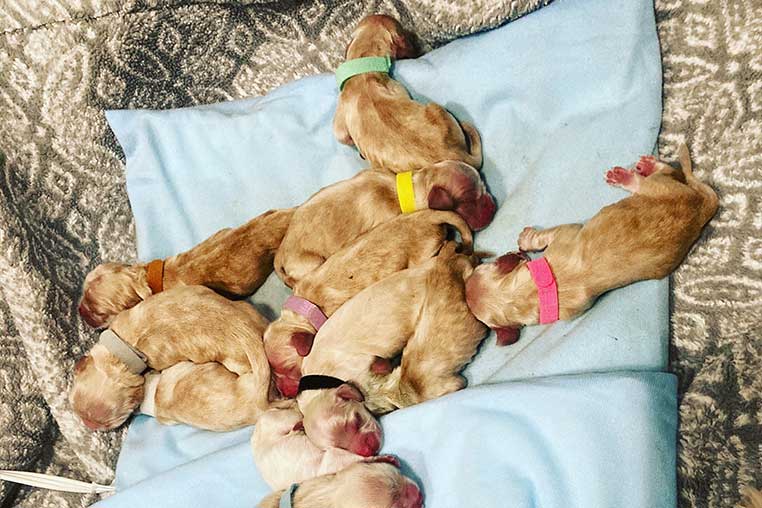
Introduce your canine trainee to new environments, people, grooming, medical care, and other friendly canines after their vaccines are complete. Housebreaking, crate training, getting the pup to come when called, and teaching him the idea of “no” should all begin now.
Moderate activity only; the growth plates in his joints prevent him from engaging in high intensity running or jumping currently. Get him used to leash and a collar but do not pull on it. Rewards are more effective than punishments when trying to earn his cooperation.
Age Range: Five to Seven Months:
The primary objective is to train the dog to obey commands such as “come” and “stay.” Brave dogs can learn the windshield-wiper pattern you will want them to use in the field as they explore the area while attached to a check-cord. When your flusher puppy is sitting quietly, you can overlay the command “hup” to show your approval. On a training table at first, you can introduce the word “whoa” while softly holding your pointer.
If you introduce dead birds to your hunting cocker spaniel breeders at this age, you will stimulate his or her hunt drive, and if you are fast enough, you can even check-cord your puppy into the smell a cone of live birds that are hard-flushing. While retrievers and spaniels who know “hup” can be taught to stay on flush, the true goal of this exercise is to make the dogs excited about interacting with birds rather than to improve their performance.
Age Range: Eight to Eleven Months:
Bring out the electrical training collar, but only use it when you know for sure that he has completely mastered a command. The tendency to point is rising in prominence now. Retrievers and multipurpose dogs are best suited to bring retrieved bumpers back.
Take your field cocker spaniel hunting for brief periods of time if he has been appropriately introduced to guns. The proper pattern for a field dog is a back-and-forth work out with a check cord attached, either up close for spaniels and retrievers or out to the dog’s usual habitat for pointing breeds.
Age Range: Twelve to Sixteen Months:
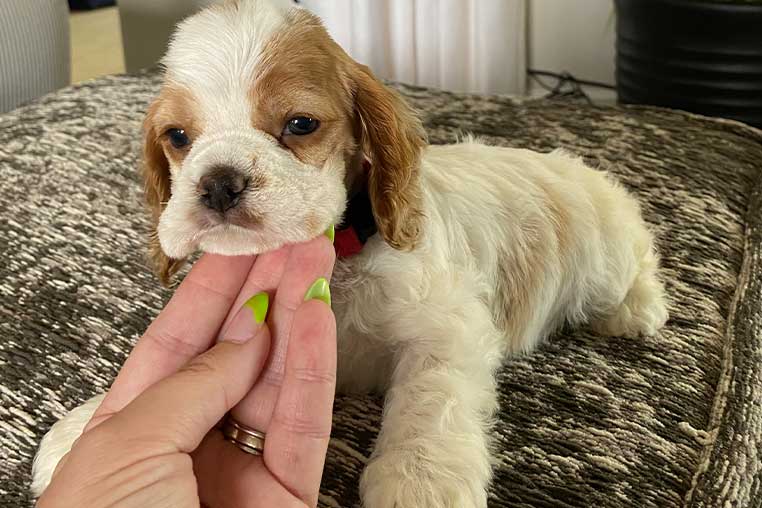
Most obedience orders should be easy for your adolescent dog to follow. A bird should be stood by a pointer until it flies. Any dog tasked with working the marsh should make it a top priority to learn “blind manners,” or how to remain motionless and quiet as hunters call ducks. In a similar manner, easy markers can be watched for falling birds to enable precise retrievals. Field bred English cocker spaniel training is a lifelong commitment that will bring you both joy, frustration, and occasional success.
This process consists of both incremental progress and sudden breakthroughs, as well as pauses and setbacks. Expect to do a lot of corrective work with even the greatest puppy since he or she will inevitably veer off course. You will know it was all worthwhile the moment during cocker spaniel quail hunting when he first points out towards the direction, he smells the fallen prey.
While it is true that all dogs may be trained to stop, pounch, and eat their prey, the real measure of a hunting dog is its capability to work together with its master. And this can be achieved by starting the training at earlier age.
Playing Tug of war and retrieve method:
Have fun with the decoys for a while every day. To help him associate the fragrance with the sight, use a scent spray. Get him to play tug of war and retrieve, and then sleep with the decoys in his bed. Get him used to his normal hunting territory by bringing him for walks there on a regular basis. Make it a habit to move discreetly, but to stop and grab his attention when you spot prey. You can get him to understand by pointing and staring at it. Get lively when you have his attention.
If you want to rile him up, all you must do is use a high voice. If you always show your dog how excited you get when you spot the prey, he will learn to react the same way. It is counterintuitive, but you should set the bar high from the get-go. If you see your prey, you should pursue it. You may raise your arms and shout as you advance.
Eventually, your working Cocker Spaniel will catch on and do what you say. A moment later, he will be chasing on his own. Make it a habit to generously treat him whenever he successfully completes a hunt or brings back a catch. With a larger reward, he is more inclined to repeat the action. Make sure he gets something even for a try, especially at the beginning.
Inducing the sense of smell and scent method:
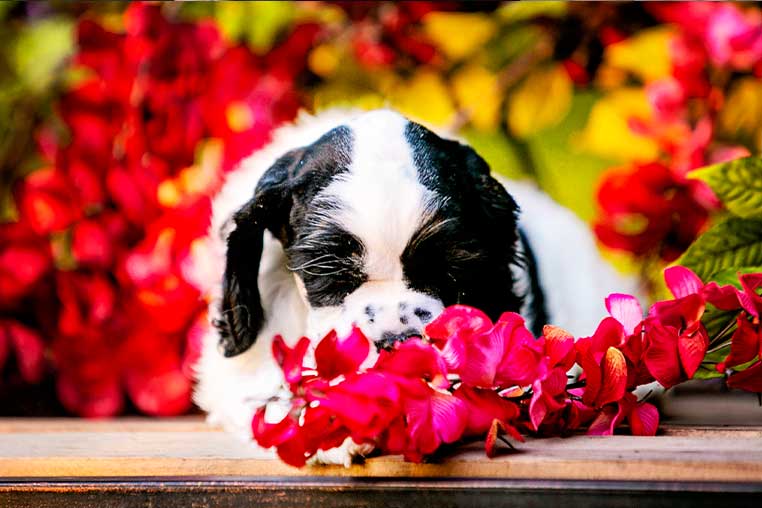
You need to accept the fact field bred Cocker Spaniel breeders’ keen sense of smell. The toys and other decoys should also be sprayed with the scent spray. Then, daily play with those toys should be used to rouse him. You need that aroma to arouse his interest in you. Prepare a fragrance trail in your backyard by going outside. It may begin close to the entrance and proceed towards one of his dummy targets.
This is what you will use to teach him how to hunt. Fasten a small leash around his neck and lead him to the trailhead. Instruct him to do so, and then follow his nose. It is possible that getting on your hands and knees and pointing is the first step. Pull him back on the path if he wanders off. Get him to the trailhead and back again. It is crucial that he understands that there is always something good at the finish line.
Then Start him off with very few scent trails around the house, and once he is mastered those, take him out to the surrounding fields. The aroma can be dispersed and made to linger for a longer period here. Simply start over from the beginning. After a week or two of training, he will learn to use his nose and hunt for food on his own. Give him a minute or two to mess around with the fake. Speak in an excited, high-pitched voice if you want to make him happy.
Soft-mouth Method:
This method is used to train a Cocker Spaniel not to bite. Soft-mouth method teaches him, the hard lesson that it is not okay to use its teeth on people. Make him feel that biting is unacceptable and puts an end to the game. Be careful when playing with your young canines if it tries to mouth your hand.
Dogs often act this way while they are just learning about their environment; it is not aggressive but at the same time not acceptable. You must teach him that touching your skin with his teeth is never okay. During play, if the puppy bites your fingers or skin, you should scream in faux anguish or make a high-pitched ‘pain’ noise to get the full dramatic effect.
It is important to act out and whimper as convincingly as possible so that the puppy will get the message as quickly as possible. Then, simply let your hand go limp to end play. Because the puppy loves to play, he will learn quickly the importance of soft-mouth and that biting too hard stops the game. He will be more careful to keep his teeth away from human skin in the future.
Gun pattern method:
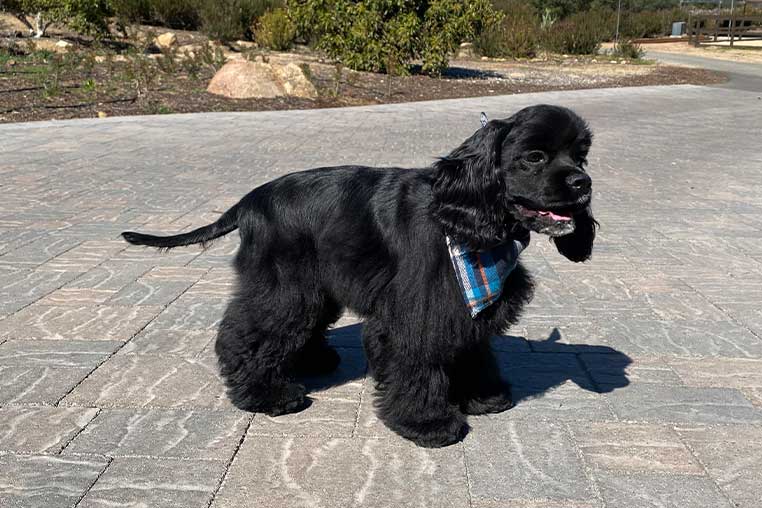
Professional hunters often use pigeons to teach a puppy to stay in the right place within the gun pattern. Working Cocker Spaniel needs to know how to work within the perimeter of the gun for an effective hunting.
At the same time, a Cocker Spaniel must be taught how to flush and bring back birds while staying within shooting range of the hunter. The most important thing is that your Cocker must know how to keep chasing a bird or a rabbit and turn around if it gets too far away from the gun. You can use a call-back whistle for this.
Familiarizing Gun Sound – Method:
A dog hunting with you may be spooked by gunfire and flee if you fire your gun during the hunt. This highlights the significance of firearms education. A well-trained dog should not react with fear when faced with sudden, loud noises, especially a gunshot.
It is expected that a Cocker Spaniel will promptly retrieve a bird after hearing the report of a gun. It is not an easy task to accomplish; you will need to practice and taking your Cocker Spaniel out with you often is the key to this method so that it can develop acclimated to the noise of gunshots and birds. You will need to undertake a shorter chase, and then you will need to call them back.
Retrieve Game Method:
Using decoys to recreate a hunting environment is a great approach to train hunting Cocker Spaniel breeders to retrieve game. Exercises should be repeated both on dry land and in the water. This is useful for adapting dogs to various surfaces.
Put a bird boy about 100 yards away in a field, to blow a duck call, and throw a bumper into the sky therefore the dog can watch it fall. Afterward, dog will move quickly towards the backyard to retrieve the bumper. Eventually, your dog will learn to keep an eye out for birds in the air and mark their spots, so they know exactly where to look when it is time to retrieve. Training a dog to retrieve in the dark is also essential.
As a result, you can lead a dog to a downed bird that your dog missed. Experts recommend training your dog to respond to a set of whistles and hand signals that you give them, but this takes a lot of practices to master.
FAQs.
Q1. Do Spaniels like to hunt?
Ans. Yes, Spaniels like to hunt. The spaniel can win the trust of hunters. It has unrelenting prey drive and vigor yet has a small body size.
Q2. How do you train a spaniel for Hunting?
Ans. Simulating a hunting setting with decoys is a terrific way to educate your hunting dogs to retrieve the game. Practicing the drills both on land and in the water would help dogs to get accustomed to many types of environments.
Q3. Are Cocker Spaniels prey driven?
Ans. Cocker Spaniels is indeed motivated by prey. They do naturally want to chase small animals like cats, squirrels, other dogs, and occasionally even moving cars.
On the other hand, breeds that were developed for bird hunting typically do not chase, although you may find it challenging to gain their attention while birds are flying around.
Q4. How do you satisfy a dog’s prey drive?
Ans. The game of frisbee is an excellent way to motivate and train the prey mentality in your dog, and it is a lot of fun for both of you. Playing fetch, like other high-hunting activities, is an affordable pastime that you may participate in in your spare time.
Q5. Is a Cocker Spaniel a gun dog?
Ans. The spaniel is a good example of a gun dog. Spaniel breeds for water and land had been developed by the 17th century’s end. The ancient English water spaniel was used to find waterfowl that had been shot with an arrow.
Conclusion:
I hope with this article “how to train a Cocker Spaniel to hunt” you have learned some interesting facts and methods for making an efficient hunting time with your Cocker Spaniel. If you want to get the most out of your hunting dog training program, do it somewhere quiet and out of the way of potential interruptions. Puppies, especially young ones, are often distracted by things like noises, television, other animals, and even family members.
To succeed, you and your dog will need complete attention. As the training continues, you can gradually introduce a few minor interruptions. Your Cocker Spaniel’s obedience and respect for your commands will flourish under these conditions.
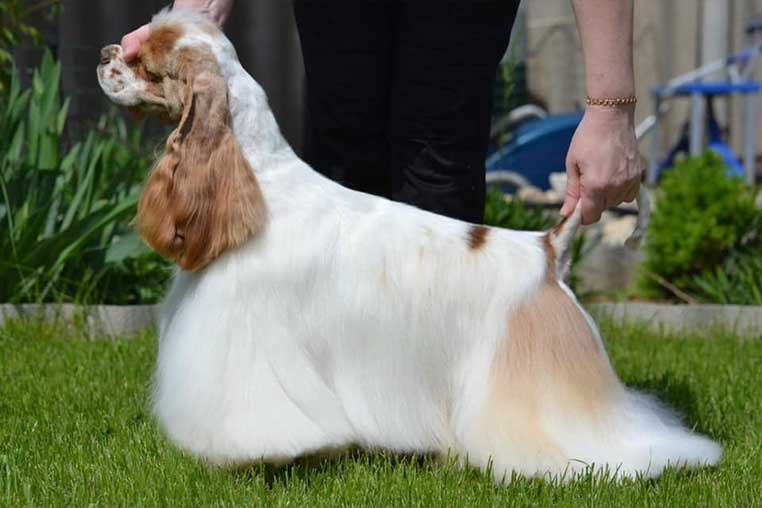
Leave A Comment